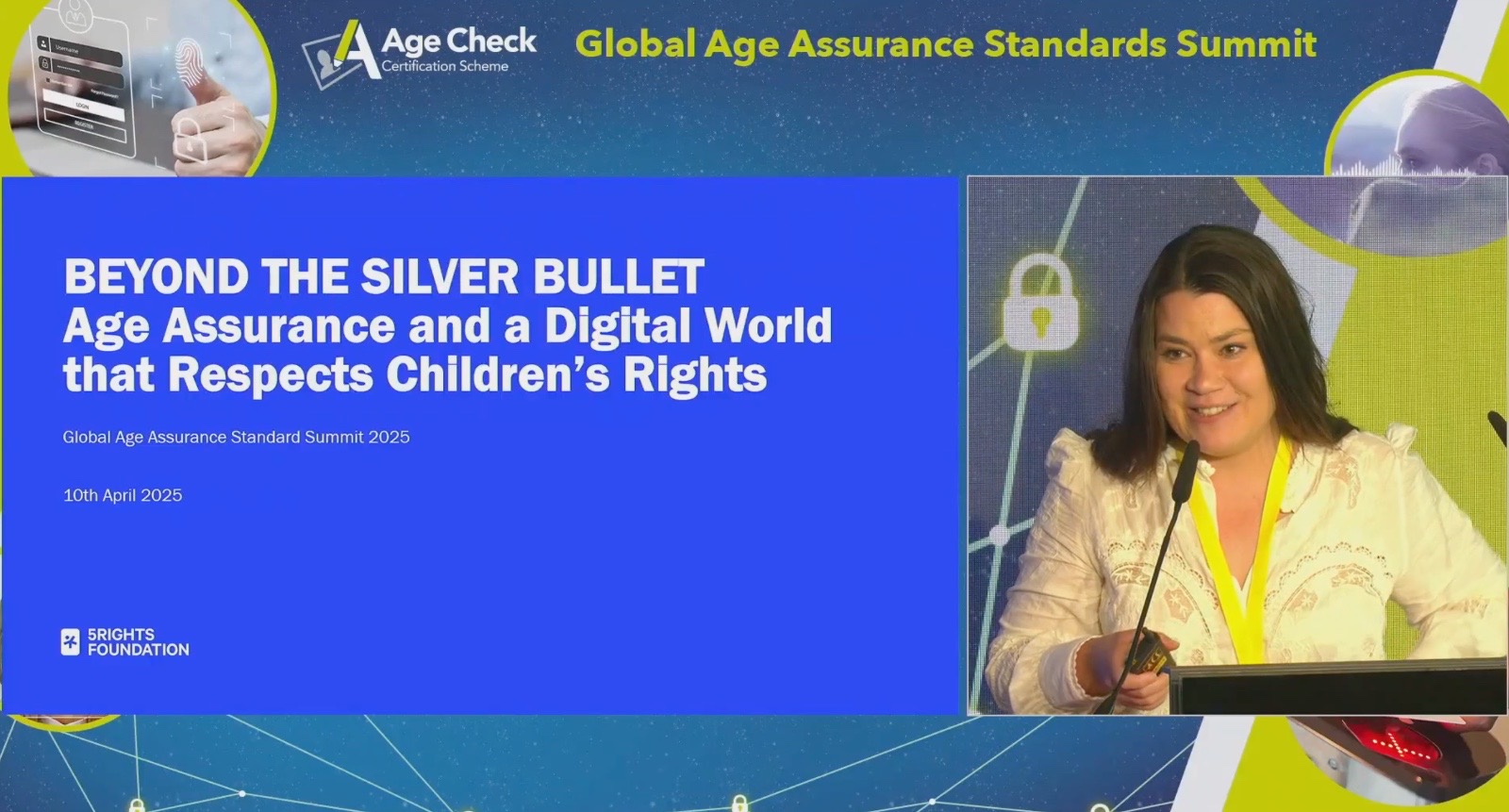What happens once you know it’s a child? Rethinking age assurance for a rights-respecting digital world
Recognising children online must come with responsibility. Age assurance, done right, is a key step toward a digital world that respects their rights.

In today’s digital world, children are not just present — their offline and online lives are deeply interconnected, shaping how they learn, play, socialise and express themselves at home, at school, and among peers. Yet, despite their constant and growing use of digital services, most digital products and services still fail to acknowledge their presence.
As Marie-Ève Nadeau, Head of International Affairs at 5Rights Foundation, recently put it at the Global Age Assurance Standard Summit in Amsterdam:
“The real question is not whether children should be online — they are online. The question is: what happens once you know that they are?”
For too long, age assurance has been framed narrowly as a silver bullet and a tool to restrict access. But this reductive view misses the point. Age assurance should not be about keeping children out; it should be about letting them in — safely. It should be a means of recognising children so that digital environments can be adapted to meet their needs, uphold their rights, and enhance their experiences.
Today’s digital economy runs on attention. Through persuasive and manipulative design, platforms are engineered to capture and hold children’s focus, nudging them toward excessive engagement and sharing, where being online feels less like a choice and more like a requirement. The result? Our Youth Ambassadors tell us that they feel addicted, distracted, and increasingly disconnected from their offline lives.
These harms are not incidental. They are the product of a system that prioritises commercial gain over children’s wellbeing.
Age assurance as a getaway rather than a gatekeeper
Age assurance, when done right and proportionately, is a powerful piece of the puzzle to keep children safe online. It allows platforms to recognise the presence of children and, crucially, to act on that recognition. But this is only meaningful if it comes with enforceable standards, certification schemes and accountability. Without them, age assurance risks becoming just another vector for surveillance or commercial exploitation.
At 5Rights, we have contributed to international standards like IEEE 2089.1 and have long advocated for privacy-preserving, proportionate, and rights-respecting approaches to age assurance.
Critically, age assurance must serve children’s best interest rather than simply “tick a box”.
Recognising children means designing for them
Children are rights holders under the UN Convention on the Rights of the Child. These rights extend to the digital world, as clearly articulated in General comment No. 25.
A rights-based approach to age assurance ensures that recognition leads to responsibility. It obliges companies to design experiences that protect, empower, and support children—not just restrict them.
The path forward is clear. Regulatory frameworks like the UK’s Age-Appropriate Design Code, the EU Digital Services Act and the African Union Child Online Safety and Empowerment Policy are already setting new expectations for recognising and respecting children in digital spaces. But industry must go further building on these standards to create platforms that truly enable children to thrive.
Age assurance is not a silver bullet. But it can be a building block — one that helps end the era of pretending children don’t exist online and begins a new era of designing with them in mind. When done properly, it can open the door to a digital world where children are not only safe, but respected, empowered, and able to seize the full promise of the digital age. In this broader context, 5Rights will soon be publishing a new report offering practical pathways for rights-respecting implementation.
